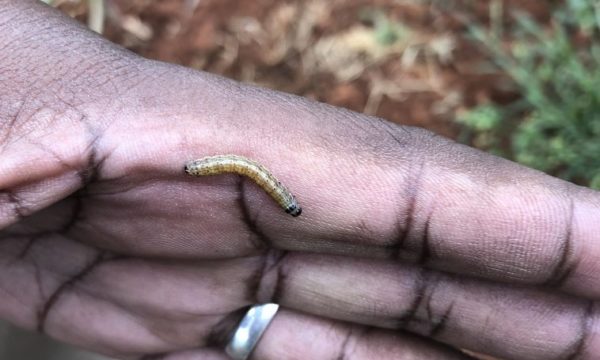
A new study has determined the compatibility of chemical pesticides – commonly used by maize growers – with the natural biological control Trichogramma ostriniae (Hymenoptera: Trichogrammatidae), an egg parasitoid of the Asian corn borer pest.
The research, co-authored by CABI with the Chinese Ministry of Agriculture and Rural Development (MARA) – CABI Joint Laboratory, provides valuable results which can be used to design an integrated pest management plan combining chemical pesticides applications with augmentative releases of T.ostriniae wasps against maize pests.
The scientists, which included Dr Feng Zhang, CABI’s Regional Director, East & South-East Asia, sought to test the lethal and sublethal effects and residual toxicity durations of various pesticides including four herbicides (pendimethalin, topramezone, glyphosate, and atrazine), three insecticides (imidacloprid, emamectin benzoate, and ethiofencarb) and three fungicides (propiconazole, benzoyl cyclazole, and difenoconazole).
They wanted to discover, under laboratory conditions, residual toxicity to adult parasitoids, the lethal effect of the pesticides on the parasitoid’s eggs inside the host egg, and on the reproduction of the parasitoid’s female offspring.
As outlined in the journal Ecotoxicology and Environmental Safety, the researchers found that the safe interval between pesticide applications and releases of T.ostriniae is between two to three weeks. Caution is needed in interpreting the laboratory bioassay data because abiotic factors such as rain, sunlight, wind, and dew might affect the impact of pesticides in the open-field conditions.

Three tested pesticides, including ethiofencarb, glyphosate, and benzoyl cyclazole were slightly harmful to T. ostriniae adults, whereas the other seven pesticides were moderately harmful.
The pesticide residues of ethiofencarb, and emamectin benzoate, showed slightly persistence of toxicity to T. ostriniae adults, in contrast to the remaining pesticides.
Glyphosate, emamectin benzoate, imidacloprid, ethiofencarb, and propiconazole were classified as harmless, causing less than 30% reduction in emergence rate of wasps from host eggs, while atrazine, pendimethalin, topramezone, benzoyl cyclazole, and difenoconazole were classified as slightly harmful, causing between 31–52% reduction in parasitoid emergence rates.
The scientist further found that the number of eggs subsequently laid by T. ostriniae females that had emerged from parasitized host eggs treated with atrazine was significantly reduced compared to which of untreated parasitized host eggs. No negative effects were observed with atrazine treatment on the emergence rates of wasps, their wing deformity rates and sex ratios.
Additional information
Main image: A woman farmer deploys Trichogramma egg card in a maize field in Dehong prefecture, southwestern China (Credit: Hongkun Tai, Seed Management Station of Dehong Prefecture).
Full paper reference
Hongkun Tai, Feng Zhang, Chun Xiao, Rui Tang, Zhi Liu, Shuxiong Bai, Zhenying Wang, ‘Toxicity of chemical pesticides commonly used in maize to Trichogramma ostriniae (Hymenoptera: Trichogrammatidae), an egg parasitoid of Asian corn borer,’ Ecotoxicology and Environmental Safety, Volume 241, 2022, DOI: 10.1016/j.ecoenv.2022.113802
The paper can be read open access here: https://www.sciencedirect.com/science/article/pii/S014765132200642X
2 Comments
Leave a Reply
Related News & Blogs
Can intercropping make fall armyworm’s natural enemies more effective?
Native to tropical and sub-tropical America, the highly invasive fall armyworm (FAW), Spodoptera frugiperda was first reported in Africa in 2016. The pest quickly spread to every country in sub-Saharan Africa, reaching Zambia in late 2016. Fall armywor…
15 March 2022





But in Pakistan, fall armyworm is damaging more maize as compared to corn borer.
A recent study underscores concerns about the toxicity of chemical pesticides employed in maize farming, particularly their adverse effects on the natural enemies of the Asian corn borer pest. The findings highlight the need for a careful reevaluation of pesticide usage to strike a balance between pest control and preserving the essential role of natural predators in maintaining a healthy agricultural ecosystem.